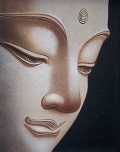Table 2:Further meditation on the Dhamma Chakka Pavattana
I apologize for certain spelling and grammatical mistakes in the first table. I will revise(keep revising) , which will more importantly include your suggestions. The following is from the point where we left at table 1.
Table 2
|
Sn |
Lines in Pali |
Translation with Notes |
|
5 |
Ete kho, bhikkhave, ubho ante an·upagamma majjhimā paṭipadā tathāgatena abhisambuddhā cakkhu·karaṇī ñāṇa·karaṇī upasamāya abhiññāya sambodhāya nibbānāya saṃvattati. |
Now bhikkhus , there is a path which steers clear (anupagama) from servitude to pleasure as well as servitude to pain. This path discovered and traversed by Buddhas of the past , present and to come, generates (for those who follow suit), a light – on to oneself (abhinaya), understanding and eventually culminates in nibbana. As tathagatha I assure you, that every step taken in this path (prati pada) instils and deepens(samvattati) ones vision , knowledge. Each Step on this path , powers up new found freedom(upasamaya) in Life, from which confidence, and morality and countless merits flow. Note: Tatagatha is the Lord who speaks as it actually is. Note 2: Here in these lines, the Wheel of Dhamma is perhaps introduced – counter positioning it against the Wheel of Suffering constituted by the two extremes. Each step in the Wheel of Dhamma – generates purities as much as each step in the cycle of suffering generates defilements. Could this be what Thera Anna Kondanna Saw? Just as there exists a cycle of suffering- there exists the wheel of dhamma? As common men we are blind to existence of such a rich life. |
|
6 |
Katamā ca sā, bhikkhave, majjhimā paṭipadā tathāgatena abhisambuddhā cakkhu·karaṇī ñāṇa·karaṇī upasamāya abhiññāya
sambodhāya nibbānāya saṃvattati? Ayam·eva
ariyo aṭṭhaṅgiko maggo, seyyathidaṃ:
Ayaṃ kho sā, bhikkhave, majjhimā paṭipadā tathāgatena abhisambuddhā
cakkhu·karaṇī ñāṇa·karaṇī upasamāya abhiññāya sambodhāya nibbānāya saṃvattati. |
Now bhikkhus comes the practise. It is eightfold. 1. Do not let your perspective be blinded by enslavement to pleasure and pain. 2. Do not let your intention and thoughts be subservient to pleasure and pain. 3. Do not let your speech be hijacked by passion and attachment to pleasure or pain 4. Do not let your actions spring from servitude to pleasure and pain 5. Ensure your living is not entrenched in constant pursuit of pleasure and hidden subjugation to pain 6. Ensure your efforts are not wasted nor dissipated in constant pursuit of pleasure or running away from pain 7. Be mindful , alert and guard all of the above, in body and mind, against being enslaved by Pleasure and pain. 8. With the above 7 you fall in the “Zone”, sharpen and develop that “Zone” by which all the 7 are further developed and so on – the Cycle (Wheel of Dhamma) goes on until one reaches Nibbana. This is the practise , this is the contemplation, this constitutes the meditation and practise. These 8 are the pistons which fire up and move (samvattati) the wheel of dhamma. |
Please correct/add/improve
